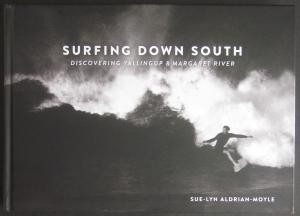For surfers and non-surfers, Surfing Down South offers a unique insight into Australia’s surfing counterculture and a unique time in Australia’s history. With a Foreword by legendary surfer Taj Burrow, the book covers the early days of surfing in Yallingup and Margaret River and records first-hand stories of those who experienced it. A research-heavy book, published by Margaret River Press and written by Sue Lyn Aldrian-Moyle (Chefs of the Margaret River Region), the book has been in production for two years, as stories and photos were collated from the baby-boomer surfers who surfed in Yallingup and Margaret River in the 50s and 60s. The book follows the often larrikin behaviour of young surfers who share riveting and humourous anecdotes of their antics and adventures: fisticuffs at Caves House, aerial acrobatics with local farmers, draft dodging during the Vietnam War, drug smuggling, setting up shaping businesses in settler’s cottages, the organization of the first surfing competitions and building alternative style homes and businesses.Their recollections of surfing in WA during their youth are revealed as trailblazing and controversial, as the book steps back in time to the days before Landcruisers and when bear suits were worn as wet-suits, when surfers listened to Jazz and drove old Holdens and Volkswagens along dusty tracks and when farmers locked up their daughters when the surfers were in town. Archival vintage photographs in the book capture pivotal classic moments of surfing’s history. Photographs by legendary surf photographers Ric Chan, John Witzig and John Ogden sit alongside engaging narratives from pioneering surfers such as George Simpson, Ian Cairns, and Rob Conneeley. This ‘first’ surfing book from young publishers, Margaret River Press has captured the era and location beautifully. I’m stoked to see that the huge range of antics and anecdotes compiled by Sue-Lyn in this historic book about surfing in the Margaret River Region are now preserved for all to enjoy and to remind us of a very precious era.” Taj Burrow. pp. 191 illusts #0320
Surfing Down South: Discovering Yallingup & Margaret River
$34.00
Sold Out
Additional Information
| Author | Sue-Lyn Aldrian-Moyle |
|---|---|
| Publisher | Margaret River Press |
| Year Published | 2014 |
| Book Condition | FINE |
|---|---|
| Binding Type | Hardcover |
